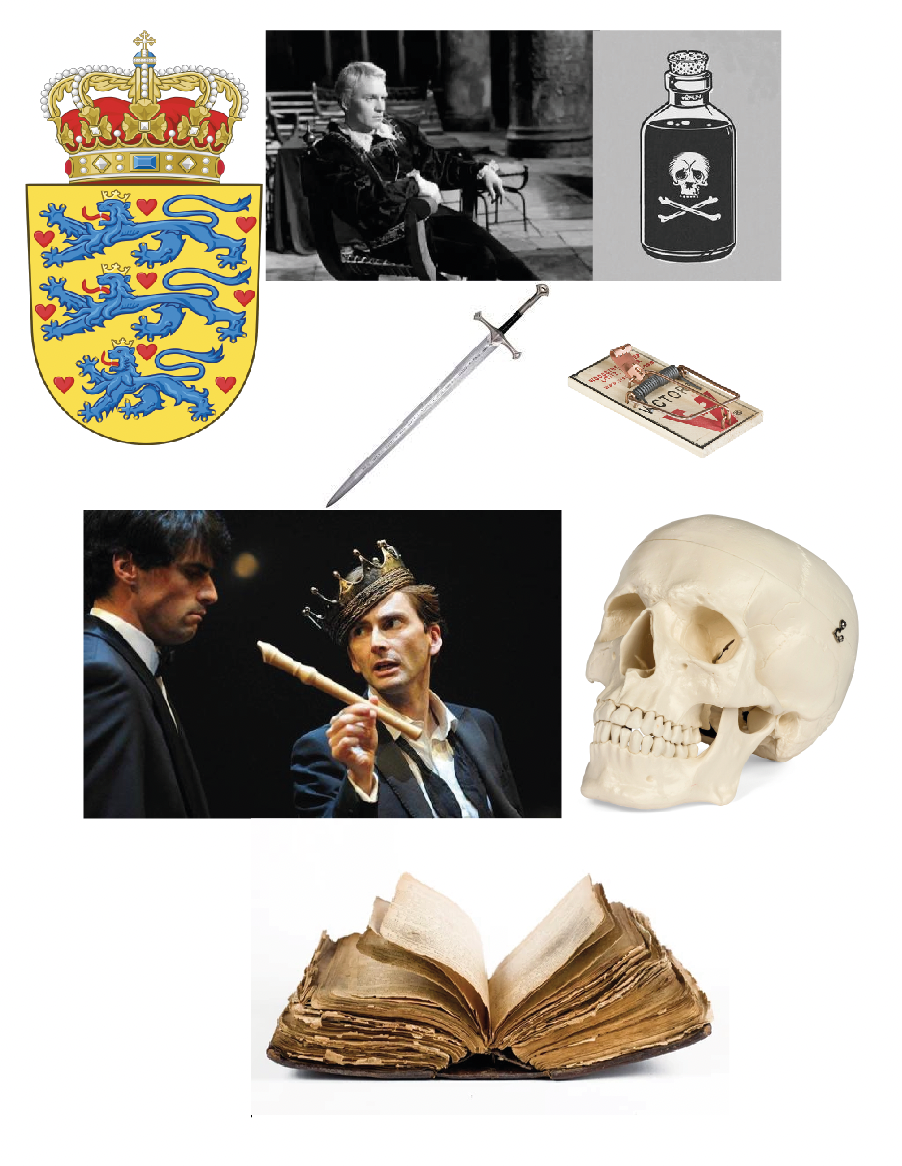There are several items that are important for Hamlet, associated with him and can identify him as a character. One of the most important items for Hamlet that characterizes his identity is black mourning clothes. While the whole court had already finished mourning for the murdered king, Hamlet did not stop wearing black as a sign of his sadness. Mother asks him to “cast thy knighted color off, and let thane eye look like a friend on Denmark” (Shakespeare 25). However, Gamlet told her that this would not change anything and he would still be in mourning for his father. This aspect symbolizes his constant desire to find out the truth about the death of the king and his unwillingness to let him go.
Another object that is associated with the personality of Hamlet is the famous skull of Yorick, the king’s jester. Upon discovering his skull, Hamlet notes “poor Yorick! I knew him, Horatio—a fellow of infinite jest, of most excellent fancy” (Shakespeare 249). Hamlet laments over the dead, which he associated with joy and happiness. At the moment, he is surrounded by constant threat and grief, which symbolizes the skull of Yorick, which brings good memories to Hamlet and makes him feel protected. For a short moment, turning to the skull, Hamlet can imagine how he is talking to a close person and returning to the past.
Proving the murder of one’s father is one of the primary tasks for Hamlet. Thus, the mousetrap is an item that symbolizes for him the revelation of the truth that Claudius killed the king. When Hamlet was asked about the title of the play, he replied that it was called mousetrap and was about a murder in Vienna. He emphasizes that “we that have free souls, it touches us not” (Shakespeare 151). Hamlet hints that Claudius, who has already interrupted the play in half, is experiencing more violent emotions towards it than ordinary viewers. Hamlet’s idea for the play was successful and he managed to make sure that Claudius killed his father. The mousetrap can also symbolize the situation that Hamlet found himself in, where the whole court is lying to him and covering the truth.
A significant item for Hamlet is his sword, which was used in the last scene of the play in the duel between him and Laertes. It symbolizes the honour and perseverance of Hamlet in his search for the truth and his desire to bring those responsible for the murder of his father into the world. The sword for Hamlet is an object personifying honour, as he often says “Swear by my sword” (Shakespeare 67). An oath on a sword as an object related to justice for him is the highest degree of purity and honesty. Additionally, it symbolizes the end of Hamlet’s quest for truth and the desire for revenge that ended in death.
An important item for Hamlet is also a bottle of poison, since this substance constantly appears in the play. At the end, Laertes remarks that “He is justly served. It is a poison tempered by himself” (Shakespeare 281). This aspect emphasizes that for Hamlet, poison symbolizes betrayal and malicious intent, which lead to the death of his loved ones. The poison poisons Hamlet’s life in the face of the deceitful Claudius and other conspirators, which makes his life so hard. At the same time, the poison of grief struck Hamlet, who seeks to avenge the death of his father, which pushes him to recklessness.
Another item associated with Hamlet is the pipe as a symbol of the conspirators’ manipulation of the subject of which he is. Hamlet addresses Rosencrantz and Guildenstern whom Claudius has appointed to spy on him and says “do you think I am easier to be played on than a pipe?” (Shakespeare 159). In particular, this item can also indicate Hamlet’s unwillingness to obey or hide the truth, as his mother did, for example. Thus, the pipe symbolizes the rebelliousness and struggle of Hamlet with the murderers of his father and the desire to take revenge with all his might. Additionally, Hamlet is smart enough not to be manipulated by Claudius.
Another item associated with the Hamlet is a book, as he is an extremely noble and educated young man. Hamlet uses language extremely skilfully, always finding the right words for different situations. He is extremely eloquent, as evidenced by his famous monologue beginning with the words “To be or not to be—that is the question” (Shakespeare 127). To achieve this level of eloquence is possible only with the help of a sharp mind and frequent reading. Hamlet was even able to put on a play to reveal the truth about his father’s murder. This move also suggests that Hamlet is extremely intelligent and educated, possibly also due to reading.
Finally, the last item that may be important for Hamlet as a character is the coat of arms of Denmark, since he is a prince and all his misfortunes are due to Claudius’ desire to usurp the throne of this country. In conversation with Rosencrantz and Guildenstern, he notes “a goodly one, in which there are many confines, wards, and dungeons, Denmark being one o’ th’ worst” (Shakespeare 99). Thus, Hamlet emphasizes that he is not satisfied with the current state of affairs in the country and he believes that dark times have come. Rosencrantz and Guildenstern do not agree with him that it would identify the personal tragedy of Hamlet.

Work Cited
Shakespeare, William. The Tragedy of Hamlet, Prince of Denmark. Folger Shakespeare Library.